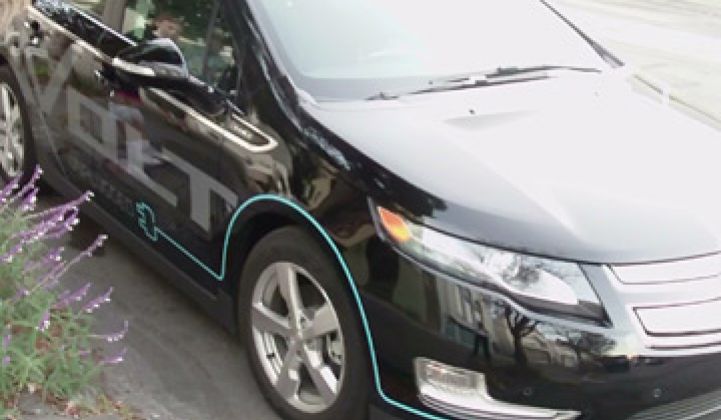Color.
It is the single most important factor that consumers focus on when buying a car, says Phil Davis, Senior Manager, Solutions, Schneider Electric, and a former car dealership owner. They might go in with a stack of print-outs from Consumer Reports, but in the showroom, it is flashy red or deep blue that really seals the deal.
"Car dealers act like they do because you act like you do," he told the audience at The Networked EV, a conference sponsored by Greentech Media at PG&E headquarters last week. The following is a video of some of the highlights of the conference.
First, the good news. The grid is being upgraded to accommodate solar panels, demand response and the rebirth of the electric car, among other applications. Investments in smart grid will grow from $5.6 billion today to $9.6 billion by 2015, according to GTM Research. Accommodating cars won't be easy: a car looks like 1.3 homes to a transformer, according to Kevin Dasso, the senior director of smart grid at PG&E. If utilities can't control when people charge their cars, it will cost $150 million to $175 million to upgrade the grid.
However, if car charging can be shoved to off-peak hours, the upgrades can be reduced and/or phased in slowly over time.
EV prices will also come down. Coda Automotive, which plans on releasing an electric car in the U.S. later this year, said it can get batteries for $500 per kilowatt hour, or half the price electric car batteries cost at the beginning of 2007. Both Proterra and BYD have come out with electric buses capable of accepting high speed charges, while General Electric will convert the lion's share of its car fleet over to electric.
The more challenging news? EVs may not flood the streets just yet. PriceWaterhouseCoopers predicted only 1.4 percent to 1.8 percent of cars sold in the U.S. will be electrics by 2016. A larger concern for car makers may be in meeting the 35.5 miles per gallon standard set by the Department of Transportation that year, according to Brandon Mason, Global Powertrain Lead Analyst, U.S. Auto Practice, at the firm. Companies or enthusiasts that want to see an electric car revolution overnight will be disappointed.
But Mason noted that to hit that 35.5 MPG mark, many auto makers will come out with 'microhybrids,' or gas cars with small electric motors that help get them from zero to 30 to 40 miles per hour. The advent of microhybrids may not amount to full electrification, but they will help reduce dependence on oil and help build battery volumes.



